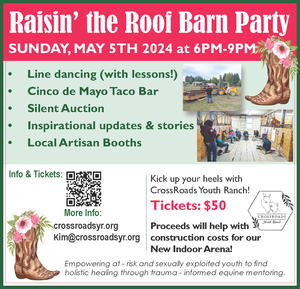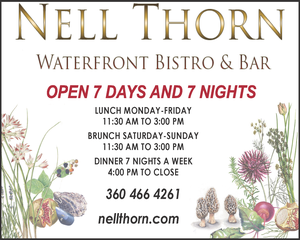Town conditional use permit planned to balance community needs
March 29, 2022
La Conner’s charm is reflected not only in the town’s scenic geography, but also in town codes and zoning standards.
These standards are drafted to strike the delicate balance between supporting local economic vitality and preserving residential quality of life.
The conditional use permit (CUP) process determines whether proposed land uses are compatible with specific zoning areas.
Town planner Michael Davolio notes that conditional use applications seem more frequent in La Conner. There is a reason for that, he said.
“From my perspective, this is because La Conner has only one residential zone,” Davolio told the Weekly News. “Most communities will have a separate multi-family residential zone, where such development is permitted by right.”
Any multi-family proposal in any residential or commercial zone in La Conner requires a conditional use permit. “Many jurisdictions handle conditional use processes differently,” Davolio said. “Some are decided by a planning commission, some are decided by a town or city council. Others, like La Conner, choose an independent outside decision-maker such as a hearing examiner.”

There is, however, one common thread, he stressed: “It should be noted that each process provides opportunities for significant public input. This is why I bring CUP applications to the planning commission for their review and recommendation, even though the La Conner code does not require me to do so.”
At its March 15 meeting the planning commission recommended against Kate and Dr. Brandon Atkinson’ application to construct a 20-unit apartment building in the commercial zone between Morris and Center streets, behind The Slider Café.

The three commission unanimously advised that Hearing Examiner David Lowell not grant a conditional use permit for the project. Members cited concerns related to project scale and potential neighborhood impact.
“As long as I’ve been on the planning commission, I do not recall that the planners went against staff recommendations,” said chairperson Marna Hanneman. “I checked with former planners prior to my appointment, and they indicated there was possibly one such case.”
Near the end of the Zoom session, Davolio pointed out that the Center Street project applicants can construct a similar-sized commercial building on the property. Any application requires them to meet numerous CUP criteria in the town’s municipal code.
Hanneman believes G and H in the conditional use permit section were not met.
“G” states: “The use must cause no adverse effect on the surrounding area due to traffic, parking, noise, odor, air or water pollution.”
“H” reads: “Consideration shall be given to the cumulative impact of like uses within the neighborhood.”
“(Letters) A-F, in my opinion, met the criteria for the conditional use permit for 306 Center Street,” Hanneman said. “G and H is how and why I decided to vote against staff recommendations.”
She advocates a wholistic approach.
“Overall, I can only speak for myself as one planning commissioner,” she said. “I’m trying to do what is best for the entire community for now and in the future and not just ‘following what the code says.’ Conditional use permits can be warranted if everything as a whole is looked at. I can only speak for myself, and my thoughts are we were going down a very slippery slope if we accepted this conditional use permit for 306 Center Street.”
She hopes that the hearing examiner considers all the La Conner citizens’ letters and how this project would affect La Conner.
Davolio’s take is somewhat different.
“A proposal for residential development on a property that is zoned commercial, but otherwise partially surrounded by residential uses, would not be regarded as having a negative impact, provided that certain conditions are met,” he said.

Davolio attached 11 conditions to his report recommending approval.
“The goal of review for a CUP,” Davolio said, “is to ensure that the development proposal is consistent with requirements of the code that may be more restrictive than otherwise permitted within a given zone. In addition, one goal would be to ensure that any proposed development does not have a negative impact on surrounding properties. Parking and landscaping would be examples of such conditions.”
The CUP process, he said, provides flexibility in land development without regulating all options.
“While many communities approach this process differently than La Conner does,” said Davolio, “I am of the opinion that this town’s development code does a good job in allowing some flexibility while protecting the overall interests of the community.”




Reader Comments(0)